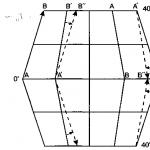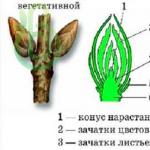Lesson topic: Prerequisites for the emergence of the teachings of Charles Darwin.
The purpose of the lesson:
– form ideas about the processes of evolution, its causes and results; expand knowledge about the contribution of Charles Darwin to the development of the theory of evolution and the formation of modern evolutionary theory;
– develop the ability to generalize and compare, give examples, work independently with educational material, reproduce material using graphic reference notes;
– to promote the formation of a respectful attitude towards the personality of scientists who participated in the formation of evolutionary ideas.
Equipment : textbook, scheme, portraits of scientists
Lesson type : combined
During the classes
I. Organizational moment
Greetings, defining the objectives of the lesson.
II. Knowledge update
Frontal conversation.
What is evolution? Directions of evolution?
Name the scientists who contributed to the development of biological science in the pre-Darwinian period?
What achievements contributed to the development of biology in the pre-Darwinian period?
Contribution of K. Linnaeus to the development of science.
The first evolutionary theory of J. Lamarck.
What are the disadvantages of the Linnaean system?
5. Analyze Lamarck's achievements in science.
6 . Work on options:
Achievements and shortcomings of K. Linnaeus
Achievements and shortcomings of J. B. Lamarck
7. Make a conclusion about the contribution of these scientists to the development of the theory of evolution in the pre-Darwinian period.
III Assimilation of new knowledge
England in the first half of the 19th century was a country of developed industry, agriculture and the largest colonial power. The country's urban population grew, intensive restructuring of agriculture was carried out: the concentration of land in the hands of large farmers increased, crop rotations were introduced, fertilizers were widely used, and machines were used for soil cultivation and plant care.
Developing industry, the conquest of new colonies and lively trade with many countries of the world demanded from agriculture more raw materials and foodstuffs for the population, in connection with which the development of methods of intensive plant growing and animal husbandry was stimulated. Intensive restructuring of agriculture was carried out: the concentration of land in the hands of large farmers increased, crop rotations were introduced, fertilizers were used more widely, and machines were used for tilling the soil and caring for plants.
However, the existing varieties of plants, as well as animal breeds, could not satisfy the growing needs, and therefore selection was rapidly developed - the science of breeding new and improving existing plant varieties and animal breeds. The main breeding method at that time was the selection and preservation for breeding of the best varieties of plants or animal breeds.
In England, experienced breeders appeared who, under the conditions of large-scale capitalist production, in a relatively short time brought out many new and valuable varieties of field, garden, ornamental plants and breeds of domestic animals (a number of breeds of cattle and small cattle, pigs, dogs, rabbits, pigeons, poultry) with new useful features. The achievements of breeders testified that a person can change breeds and varieties, adapt them to his needs through artificial selection. However, despite the provisions of transformism on the variability of nature, Lamarck's theory of evolution, C. Lyell's theory on gradual changes in the Earth's surface under the influence of natural forces, the success of paleontology, comparative embryology and taxonomy, the approval of the cell theory of the principle of the development of living nature, which convincingly showed the unity of the structure of plants and animals, their work had no theoretical justification. And, perhaps, she would not have had it for a long time if the British government had not organized special expeditions in which scientists took part to search for raw materials and new markets.
In one of these expeditions, the young C. Darwin made a round-the-world trip as a naturalist, who witnessed the success of English selection. During the journey, he collected rich factual material, which served as a source for the development of the theory of evolution, and later generalized the experience of breeders and skillfully used data from agricultural practice to substantiate the theory of evolution of the organic world.
Trip around the world. A special place in Darwin's life had a five-year (1831-1836) trip around the world as a naturalist on the ship "Beagle" (Fig. 1), which became a real school for him. Working intensively as a geologist, paleontologist, zoologist, botanist, anthropologist, ethnographer, he collected a huge and very valuable scientific material, which played an exceptional role in the development of the evolutionary idea.
Geological observations on oceanic islands, in South America, the Cordillera and other places of observation confirmed Lyell's idea of a constant change in the surface of the Earth under the influence of external and internal causes. A comparison of various factors led Darwin to the conclusion that the extinction of animal and plant species of past eras cannot be explained by "great catastrophes."
Darwin owns a number of interesting paleontological finds. Comparison of fossil sloths, armadillos with living species showed that their skeleton is characterized by many common features; at the same time, there were noticeable differences in the structure of the skeleton of the compared forms. After analyzing numerous facts, Darwin came to the conclusion that extinct and modern animals have a common origin, but the latter have changed significantly. The reason for this could be the changes that took place on the earth's surface. They could also be the cause of the extinction of species, the remains of which are found in the earth's layers.
During his round-the-world trip, Darwin collected interesting materials that explain the patterns of geographical distribution of organisms in the latitudinal (from Brazil to Tierra del Fuego) and vertical (when climbing mountains) directions. He drew attention to the dependence of fauna and flora on the conditions of existence of animals and plants.
Research in the Galapagos. Especially valuable material Darwin collected on the islands of the Galapagos archipelago, which are located in the equatorial zone of the Pacific Ocean at a distance of 800-900 km to the west from the coast of South America. He was especially struck by the uniqueness of the fauna and flora of the Galapagos. There are relatively few species on the archipelago, but most of them are characterized by a large number of individuals. Darwin collected 26 species of land birds, all but one of which are found nowhere else. He described 13 species of finches - endemic birds, i.e. common only in this region. In addition to other features, finches differ in the shape and size of their beaks, from massive, like those of the grosbeak, to small and thin, like those of a chaffinch or robin (Fig. 2). Darwin proved that the structural features of the beak depend on the nature of the food of these birds (plant seeds, insects, etc.). Different forms of finches are found on different islands. Darwin notes that one can indeed imagine that one mainland species has been modified at different ends of the archipelago. Zoologists call these birds Darwin's finches.
Comparing the fauna of the Galapagos and South America, Darwin states that the fauna of the archipelago bears the imprint of continental forms and, at the same time, is a special Galapagos variant. He reflects on the significance of isolation in the differentiation of species. Features, the nature of the distribution of the Galapagos organisms so impressed him, Darwin noted, that he began to systematically collect all the facts that had a certain relation to the species.
Darwin's stay in Tierra del Fuego and meetings with the natives led him to the bold idea of the animal origin of man. The study of the structure of coral reefs was the basis for the development of Darwin's theory of the formation of coral islands.
After the trip. After returning from a trip on October 2, 1836, Darwin processes and publishes the collected geological, zoological and other materials and begins to develop the idea of the historical development of the organic world, which originated during the trip. For over 20 years he has been persistently developing and substantiating this idea, and continues to collect and generalize acts, especially from the practice of plant growing and animal husbandry.
On November 24, 1859, the already mentioned brilliant work of Charles Darwin "The Origin of Species by Means of Natural Selection, or the Preservation of Favored Breeds in the Struggle for Life" was published. This book, which masterfully presented and comprehensively substantiated the scientific foundations of evolutionary theory, was very popular, its entire circulation was sold out on the first day. One of Darwin's contemporaries figuratively compared the appearance of The Origin of Species with an explosion "which science has not yet seen, which took so long to prepare and so quickly struck, so inaudibly let down and so deadly striking. By the size and significance of the destruction caused, by the echo that echoed in the most distant branches of human thought, it was a scientific feat that had no equal "(c) - (Kravchenko M.A., Kravets G.K., Khranovsky P.A. Piece dobir creature. - K .; Rad School, 1954, p. 45).
After the publication of The Origin of Species, Darwin continued to work vigorously on the substantiation of the problem of evolution. In 1868, he published "The Change in Domestic Animals and Cultivated Plants", where he comprehensively analyzes the laws of variability, heredity, and artificial selection. Darwin extends the idea of the historical development of plants and animals to the problem of the origin of man. In 1871, his book "The Origin of Man, and Sexual Selection" was published, in which numerous evidences of the animal origin of man are analyzed in detail. The Origin of Species and the following two books constitute a single scientific trilogy, they provide irrefutable evidence of the historical development of the organic world, establish the driving forces of evolution, determine the paths of evolutionary transformations, and finally show how and from what positions complex phenomena and processes of nature should be studied. His autobiography "Memories of the Development of My Mind and Character" is very interesting (in 1957 it was published by the publishing house of the Academy of Sciences of the USSR).
As a scientist, Darwin was distinguished by keen observation, developed analytical and synthetic abilities, scientific integrity, exceptional diligence, purposefulness and accuracy in work. Until the last days of his life, he did not stop systematic scientific research. So, as early as April 17, 1882, Darwin was recording the results of observations in his garden, and on April 19, the heart of the titan of human thought stopped beating. Darwin was buried in Westminster Abbey (London) next to I. Newton, M. Faraday and other prominent scientists of England.
IV Consolidation of knowledge
Why was Darwin's teaching more convincing than the theories put forward by his predecessors?
V . Homework
Reports"Biography and works of Ch. Darwin", "The evolutionary theory of Ch. Darwin and its significance"
VI . Reflection.





